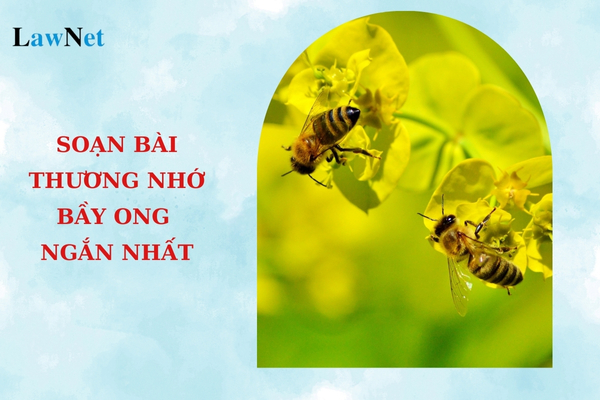What are the guidelines for preparing the shortest lesson "Thương nhớ bầy ong"? What literary knowledge does the 6th-grade Literature curriculum in Vietnam include?
What are the guidelines for preparing the shortest lesson "Thương nhớ bầy ong"?
The lesson "Thương nhớ bầy ong" is a piece studied in the 6th-grade Literature curriculum.
Students can refer to the following sample lesson "Thương nhớ bầy long":
|
Sample lesson "Thương nhớ bầy long" 1. Author |
Note: The preparation model for the lesson "Thương nhớ bầy ong" by Huy Can is for reference only.

What are the guidelines for preparing the shortest lesson "Thương nhớ bầy ong"? What literary knowledge does the 6th-grade Literature curriculum in Vietnam include? (Image from Internet)
What literary knowledge does the 6th-grade Literature curriculum in Vietnam include?
Under the General Education Program for Literature as issued with Circular 32/2018/TT-BGDDT, the literary knowledge in the 6th-grade Literature curriculum in Vietnam includes:
- The expressiveness of the literary text
- Details and the relationship between details in literary texts
- The theme and subject of the text; the emotions and feelings of the author
- Elements: plot, characters, narrator's voice, and characters' speech in legends, fairy tales, and fables
- First-person narrator and third-person narrator
- Formal elements of six-eight poetry: number of syllables, lines, rhyme, rhythm
- Title, lines, stanzas, rhyme, rhythm, words, and the effects of these elements in the poem
- Elements of narration and description in poetry
- Forms of note-taking, narration style, first-person narration in memoirs or travelogues
What are the literary competencies required for 6th-grade students in Vietnam?
Under Section IV of the General Education Program in Literature issued alongside Circular 32/2018/TT-BGDDT, the literary competencies required for 6th-grade students in Vietnam are:
- Identify and distinguish different types of literary texts: stories, poems, plays, essays, and some typical genres of each; analyze the effects of some formal artistic elements belonging to each literary genre; understand the explicit and implicit content of literary texts.
- Present feelings, thoughts about literary works and the impact of works on oneself; initially create some products with literary characteristics.
- Recognize the subject, understand the theme, meaning of the text read; identify folk tales, short stories, lyrical poetry, and narrative poetry; lyrical essays and narrative essays.
- Recognize the lyrical subject, lyrical character, and the expressive and cognitive values of literary works;
- Recognize and analyze the effects of some formal elements and artistic measures associated with the characteristics of each literary genre (plot, narration, character dialogue, space and time, rhyme, rhythm, imagery, and rhetorical devices like metaphor, metonymy, hyperbole, and understatement).

